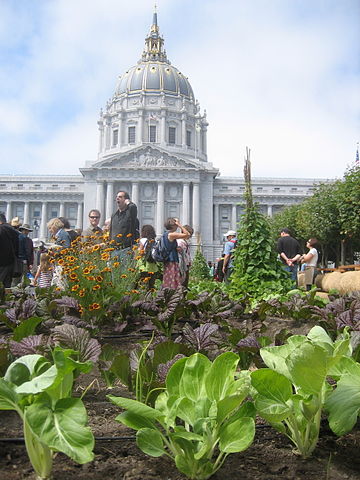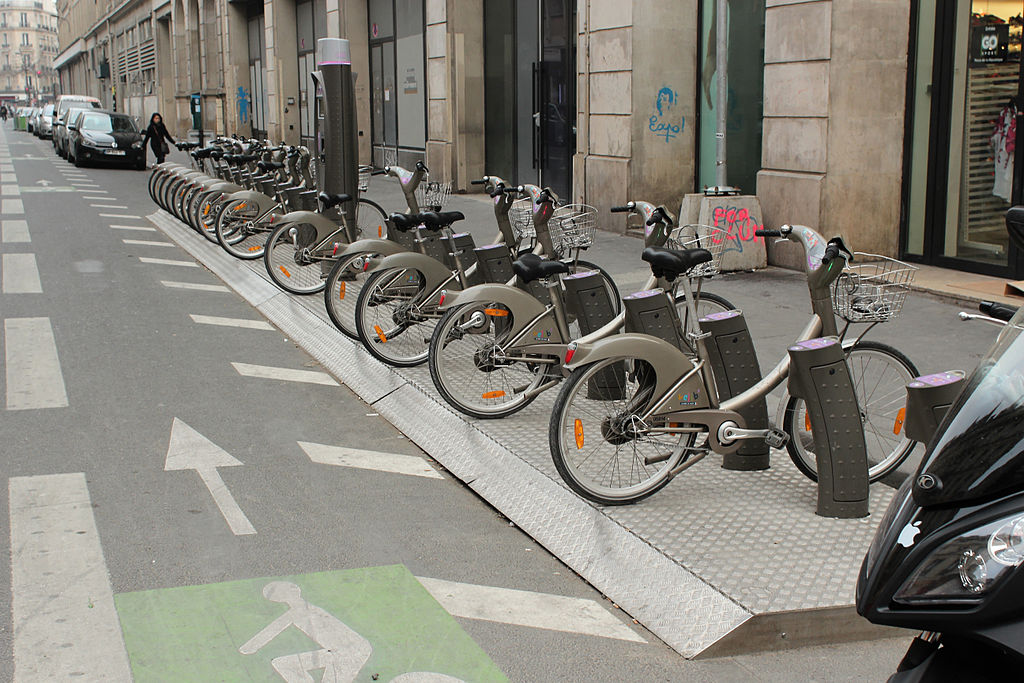Cover photo credit: Wikimedia user Coyau
The picture is gloomy.
Humans are consuming the Earth’s resources at an unsustainable clip, and the prospect of reducing that consumption seems remote at best. While global population growth is slowing, there are still more people every day. Each person is consuming more as people around the world get richer. Global trade is reaching deep into previously disconnected corners of the world, bringing cars, diesel generators, and factory-farmed meat. This process has brought material comfort, food and medicine to billions of people, but the environmental implications are decidedly less rosy. If everyone on Earth lived like a modern American we would need more land than exists on Earth, even with modern farming practices. We need to find a way to cut back.
The environmental is political
Herein lies a tricky public relations problem for environmentalists. People all over the world are going to be extremely reluctant to give up their material wealth. While a slow-motion, multifaceted environmental disaster is already seriously affecting life on Earth, most people perceive the threat as far off, amorphous and hard to predict. On the other side of the equation, depending on who you are and where you live, the material sacrifice could mean anything from your monthly bit of chicken to your first washing machine to your third car, and it is unclear who will act first. If that sounds like a tall order, it is.

Massive momentum
Fortunately, there are many ways that we can reduce our consumption of the carbon cycle without major sacrifice and within the confines of our current global economic and political structure. Any politically workable solution to reduce our burden on Earth’s ecosystems in the near term will have to find ways to spread the pain, and make cutting back appealing enough that people might go for it. Reducing our consumption of the global carbon cycle is a game of getting more with less.
A more efficient machine
We need to grow more food, manufacture more goods and house more people on less land, using less energy. Technological advancements, such as “Lean Manufacturing,” or improved food distribution systems, can help reach this goal. However, in many cases the technology needed to more efficiently use the carbon cycle already exists, and it’s a matter of political will and cultural attitude towards using it. The social and physical infrastructure most societies are built on were not designed with environmental concerns in mind, and there are many relatively painless efficiencies to be found.
The United States, where a large front lawn is a status symbol, and meat-heavy barbecue is sacred, faces a particularly steep uphill climb in implementing these kinds of environmental efficiencies. Cultures change, however, and already there is a developing ethos of reusing or repurposing blighted or empty lots, front lawns, rooftops, and other human-dominated, underutilized, ecologically barren land.

Levittown, PA – The dawn of the modern suburb
Cities are a major front in this effort. People living in cities take up less land and energy than those living in suburban or rural areas, and fighting suburban sprawl by increasing urban population is a good way to slow our encroachment on wild habitat. Fortunately, in the U.S., culture has started to shift to favor city living over the comparatively more wasteful suburban and exurban lifestyles, and cities are now growing faster than suburbs for the first time in decades.
Many of the features that make cities green are exactly the ones that attract people to city living, as “New Urbanist” planners are coming to recognize. High density is not only good for the environment, but also means access to jobs, restaurants, and other amenities, and the ability to live without an expensive car. Parks and street trees can offset some of the claustrophobia and dirtiness that density brings and make cities more beautiful, liveable places. They also provide myriad positive effects to the functioning of the city by cleaning air pollution, regulating temperatures, and reducing stormwater runoff that can flood sewage systems. A well-designed modern city can reduce consumption while increasing quality of life. We can capitalize on this by enacting environmentally-oriented policies as cities are built and rebuilt.

Photo: David Silver
At a local level through measures like careful zoning and smart, environmentally sensitive urban planning make cities not only liveable but attractive. Urban agriculture is a useful tool, converting otherwise empty city lots or rooftops into productive land and growing healthy food that needs less transportation to get to final customers. This reduces food waste, which means less land needs to be plowed to produce food that goes in the garbage. Eliminating minimum parking requirements and strengthening public transportation and bike infrastructure can reduce the amount of space needed for parking. The technology for these systems has existed for a long time; these changes require social and cultural change. Thankfully, that is happening.
Hope in Action
Our consumption of the planet’s resources can be seen as an environmental sin, but it can also be seen as bringing health and comfort to billions of people around the world. Certainly, renouncing some of the material wealth brought to us by global capitalism would lessen our impact on the planet, but who will renounce? Some, like Naomi Klein, have claimed that a capitalist system is fundamentally irreconcilable with environmental sustainability. I am not a political scientist and the question of political structure, while highly relevant to the question of reducing our slice of the carbon cycle, is outside of the scope of this series.
However, if we can’t agree on everything, we still need to find a way to move forward on what we can agree on. Most of the burden of responsibility to develop these efficiencies will have to fall on the industrialized world, where many of these problems were created, much of the institutional capacity to address them is located, and a disproportionate share of resources are still devoted. I’ve shown some examples of ways that we can rebuild cities to be more efficient in our use of the global carbon cycle. These efficiencies sometimes involve technological innovations and sometimes involve a change in our cultural approach to consumption, but they provide a way forward that doesn’t involve impoverishing people in the name of the environment. By rethinking the way we live, produce, and consume, we can continue to live rich, healthy lives and leave a livable planet for future generations.
In the next installment of this series, we will look at agricultural practices that can relieve wild ecosystems while providing ample food. Stay tuned!
References:
Jabareen, Yosef Rafeq. “Sustainable urban forms their typologies, models, and concepts.” Journal of Planning Education and Research 26.1 (2006): 38-52. DOI
Dobbs, Cynnamon, Francisco J. Escobedo, and Wayne C. Zipperer. “A framework for developing urban forest ecosystem services and goods indicators.” Landscape and urban planning 99.3 (2011): 196-206. DOI
Haberl, Helmut, et al. “Natural and socioeconomic determinants of the embodied human appropriation of net primary production and its relation to other resource use indicators.” Ecological indicators 23 (2012): 222-231. DOI
Shoup, Donald C. “The trouble with minimum parking requirements.”Transportation Research Part A: Policy and Practice 33.7 (1999): 549-574. link

